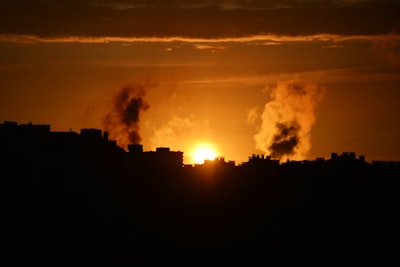Summary
On 3 July 2025, reports emerged of heightened violence in Gaza, with at least 69 Palestinians killed across the territory as Israel intensified its bombardment. An airstrike on a school housing displaced families in Gaza City resulted in 15 deaths, predominantly women and children. Another 38 people were reported killed while seeking or collecting humanitarian aid—a claim contested by the Israeli military, which labeled such reports as fabrications. The day’s violence unfolded as international pressure mounted for a new ceasefire, with the US, under President Donald Trump, claiming recent progress toward a 60-day truce. However, obstacles—including demands for an end to hostilities and Israeli withdrawal—remain unresolved.
Analysis
This report underscores the dire humanitarian plight facing Gaza’s civilians, whose attempts to escape violence or secure basic necessities repeatedly lead to new tragedies. The frequent targeting or collateral damage to shelters, coupled with deaths at aid distribution sites, spotlights both the density of the conflict zone and breakdowns in the mechanisms meant to protect noncombatants. Deep mistrust endures: Israel accuses Hamas of using civilians as shields, while Palestinian sources blame indiscriminate Israeli fire and question the very existence of “safe zones.” Meanwhile, the Gaza Humanitarian Foundation’s involvement introduces new controversy, as its US-backed operations are dismissed by major aid groups and shadowed by allegations of misconduct—including reportedly firing on civilians—though both Israeli and GHF sources deny this.
The framing of events reveals how each side seeks to control the narrative: Israel justifies its actions as targeted counter-terrorism strikes, while Palestinian accounts focus on mounting civilian casualties and the absence of genuine safe havens. The impact of outside actors, particularly the US, is complex. While brokering talks toward a ceasefire, US policy has shaped the delivery (and militarization) of humanitarian relief, with its private contractors at the heart of new disputes. The greater context remains unchanged: the ongoing war stems from Hamas’s October 2023 attack, but the logic of reprisal and siege has generated a spiraling civilian toll, now well above 57,000 Gaza deaths, according to local health authorities.
Discussion
This moment matters because it vividly illustrates the intractability—and, arguably, the deep moral costs—of the Israel-Gaza conflict. Each new report of bombed shelters or lethal aid queues prompts urgent questions: Are civilian protections in war merely rhetorical? Can outside intervention create more reliable humanitarian routes, or does it only add new layers of friction and fragmentation? The choices of all actors—from military planners to international donors—shape not only the fates of individuals, but perceptions of justice, legitimacy, and the prospects for peace.
There are echoes here of other sieges—Aleppo, Mariupol, Grozny—where civilians were similarly caught between warring parties with little protection, even in supposedly humanitarian spaces. The controversy over the GHF’s operations shows how even well-meant relief efforts can be politicized, undermining trust and complicating coordination. This ongoing humanitarian disaster not only has immediate, harrowing consequences for families in Gaza, but also threatens to entrench mutual hostility, undermine future peace efforts, and corrode the standing of international norms regarding warfare and aid.
For those following this crisis—or any conflict—it’s vital to move beyond headlines: to interrogate not just statistics, but their sources; not just calls for ceasefire, but the conditions and obstacles surrounding them; not just violence itself, but the broader systems that sustain or challenge it. As the cycle of violence and negotiation continues, grappling with uncomfortable realities—and striving for clear-eyed empathy—remains both urgent and necessary.

Comments
No comments yet. Be the first to comment!